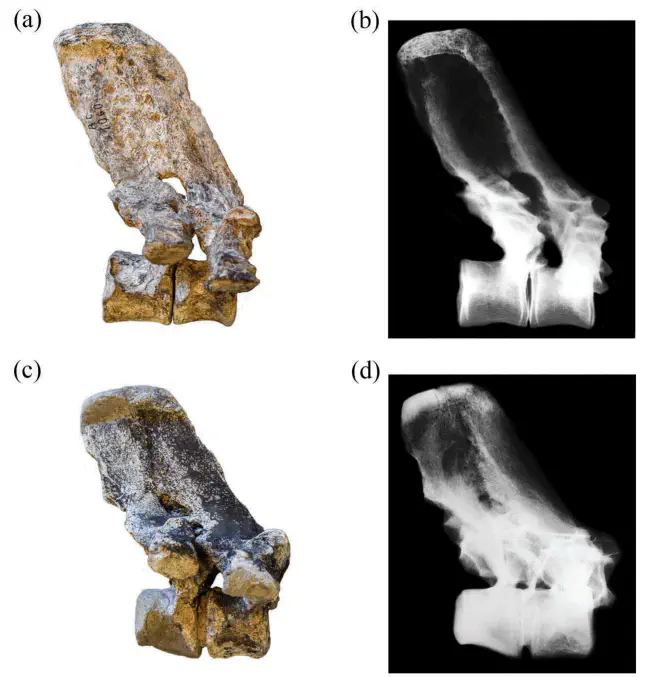Fusion of anterior thoracic vertebrae in Pleistocene ground sloths

Abstract
A previous study reported the fusion of spinous processes of thoracic vertebrae one and two in the ground sloth Glossotherium, proposing an injury or a congenital deformation as possible causes. In this paper we examined members of four families of Pleistocene sloths (Mylodontidae, Megatheriidae, Nothrotheriidae and Megalonychidae) to document the presence of this condition in different genera. We found that of nine genera analyzed, Glossotherium and Megalonyx were the only that present fusion of the spinous processes, which consistently occur between T1 and T2. When only identified T1 and T2 were considered, the incidence of the fusion was 87.5% in the case of Glossotherium and 40% in the case of Megalonyx. The high incidence of fusion in almost only one genus almost certainly would preclude the possibility of having been caused by an injury. We discuss the possibility that the observed fusions could be related to a pathological condition, or a mechanical response due to repetitive movements or particular habits.